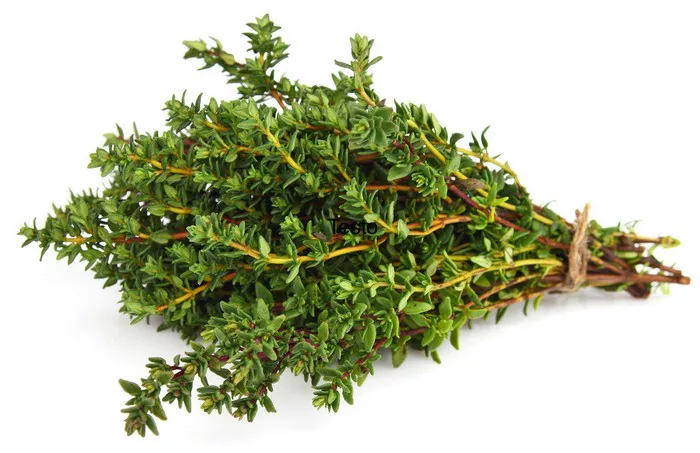Thyme, an aromatic herb renowned for its culinary and medicinal properties, has captivated gardeners and herbal enthusiasts for centuries. Beyond its delightful fragrance and flavor, thyme also boasts remarkable longevity, enduring through seasons and years with resilience. In this article, we embark on a journey to uncover the secrets behind the lifespan of thyme plants, delving into their biology, cultivation practices, and environmental factors that influence their longevity.
Understanding Thyme: A Brief Overview
Before delving into the longevity of thyme plants, it is essential to understand the herb’s characteristics and growth habits. Thyme (Thymus vulgaris) belongs to the Lamiaceae family and is native to the Mediterranean region. It is a perennial herb with woody stems, small aromatic leaves, and clusters of tiny flowers ranging in color from white to purple. Thyme is renowned for its versatility in culinary applications, as well as its medicinal properties, including antibacterial and antifungal qualities.
Factors Influencing Thyme Longevity
The lifespan of thyme plants can vary depending on several factors, including genetics, environmental conditions, cultivation practices, and maintenance. Let’s explore each of these factors in detail:
1. Genetics: Like all living organisms, thyme plants inherit genetic traits that can influence their lifespan. Some thyme varieties may be naturally long-lived, while others may have shorter lifespans. Selecting cultivars known for their longevity can significantly impact the lifespan of thyme plants in a garden or herbaceous border.
2. Environmental Conditions: The environment in which thyme plants are grown plays a crucial role in determining their longevity. Thyme thrives in well-drained soil with good air circulation and plenty of sunlight. Excessive moisture or poor drainage can lead to root rot and other diseases, ultimately shortening the lifespan of thyme plants. Additionally, thyme is tolerant of drought conditions once established but may require occasional watering during prolonged dry spells, especially in hot climates.
3. Cultivation Practices: Proper cultivation practices are essential for promoting the longevity of thyme plants. When planting thyme, ensure that the soil is well-prepared with organic matter and that the plants are spaced adequately to allow for air circulation and growth. Regular pruning can help maintain the health and vigor of thyme plants by removing dead or diseased foliage and encouraging new growth. Additionally, avoiding over-fertilization and chemical pesticides can prevent stress and prolong the lifespan of thyme plants.
4. Maintenance: Regular maintenance tasks such as weeding, watering, and mulching can contribute to the longevity of thyme plants by reducing competition for resources and providing essential nutrients. Mulching with organic materials such as straw or compost helps retain soil moisture, suppress weeds, and regulate soil temperature, creating an optimal growing environment for thyme plants.
Life Cycle of Thyme Plants
Thyme plants undergo a distinct life cycle characterized by germination, growth, flowering, and dormancy. Understanding the life cycle of thyme is essential for managing their care and optimizing their longevity.
1. Germination: Thyme seeds typically germinate within 7 to 14 days when sown in well-drained soil with adequate moisture and warmth. Once germinated, thyme seedlings require careful attention to ensure proper establishment and growth.
2. Growth: During the growth phase, thyme plants develop a dense mat of aromatic foliage, with new shoots emerging from the central crown. Regular watering and fertilization promote healthy growth, while pruning helps maintain compactness and shape.
3. Flowering: Thyme plants typically begin to flower in their second year of growth, producing clusters of small flowers atop slender stems. The flowers attract pollinators such as bees and butterflies, contributing to the biodiversity of the garden.
4. Dormancy: In colder climates, thyme plants may enter a period of dormancy during the winter months, during which growth slows or ceases altogether. While thyme is generally hardy and can withstand frost and cold temperatures, providing adequate protection, such as mulching, can help prevent winter damage and ensure the plant’s survival.
Extending the Lifespan of Thyme Plants
While thyme plants are naturally long-lived, there are several strategies gardeners can employ to extend their lifespan and promote healthy growth:
1. Divide and Propagate: Over time, thyme plants may become overcrowded, leading to reduced vigor and productivity. Dividing established clumps every few years helps rejuvenate the plants and maintain their vitality. Additionally, propagating thyme from cuttings or divisions allows gardeners to create new plants and expand their thyme collection.
2. Provide Adequate Care: Consistent care and attention are essential for prolonging the lifespan of thyme plants. Monitor soil moisture levels regularly and water deeply during dry periods, avoiding overhead irrigation to prevent foliage diseases. Fertilize sparingly with a balanced fertilizer to avoid excess nitrogen, which can promote lush growth at the expense of flavor and aroma.
3. Manage Pests and Diseases: Thyme plants are relatively resistant to pests and diseases, but occasional problems may arise, particularly in humid or overcrowded conditions. Monitor plants regularly for signs of aphids, spider mites, or fungal diseases, and take prompt action to mitigate any issues. Cultural practices such as proper spacing, pruning, and sanitation can help prevent pest and disease problems and maintain plant health.
4. Harvest Responsibly: Regular harvesting not only ensures a steady supply of fresh thyme for culinary use but also promotes bushier growth and prevents the plants from becoming overly woody or leggy. Harvest thyme leaves as needed, taking care not to remove more than one-third of the plant’s foliage at a time. Allow the plants to recover between harvests, and avoid excessive pruning during the flowering season to preserve the plant’s ornamental value and support pollinator populations.
Conclusion
In conclusion, thyme plants are valued not only for their culinary and medicinal properties but also for their remarkable longevity and resilience. By understanding the factors that influence thyme lifespan and implementing appropriate cultivation practices, gardeners can enjoy healthy, productive thyme plants for years to come. Whether grown in a kitchen garden, herbaceous border, or container, thyme remains a steadfast companion, enriching our lives with its fragrance, flavor, and enduring beauty.


